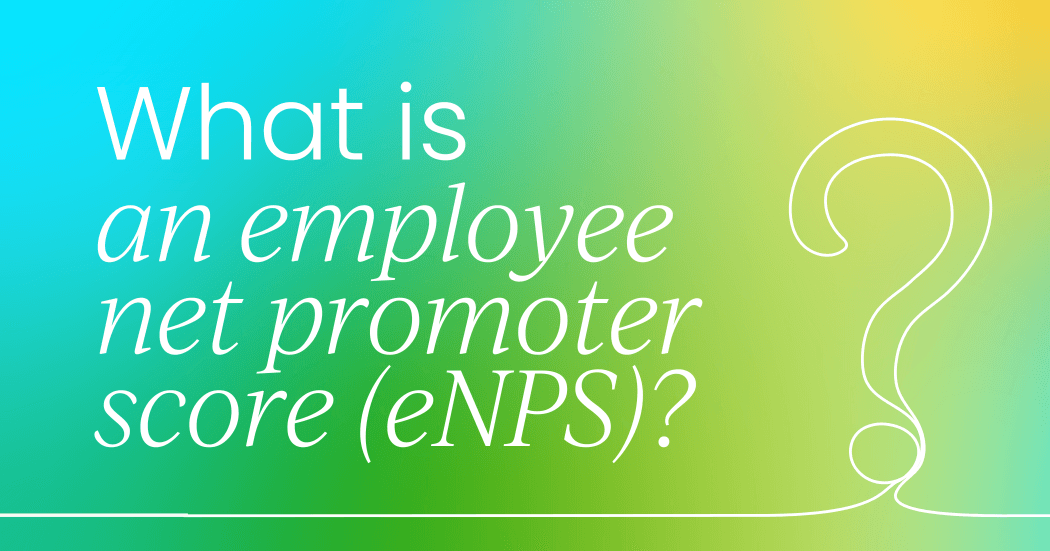As a people leader, you know that engaged employees don't just show up, they show out.
They’re the ones hyping your company on LinkedIn, sticking around longer than average, and recommending you to everyone they know. Through word of mouth alone, they can help improve your company's retention, recruitment, and reputation.
But here’s the big question: How do you measure something like that?
That’s where Employee Net Promoter Score (eNPS) comes in. It’s simple, sharp, and it just might change how you think about employee engagement.
You can read on to learn more about what an Employee Net Promoter Score is, how to calculate eNPS, good vs bad scores, and more.
What is an Employee Net Promoter Score (eNPS)?
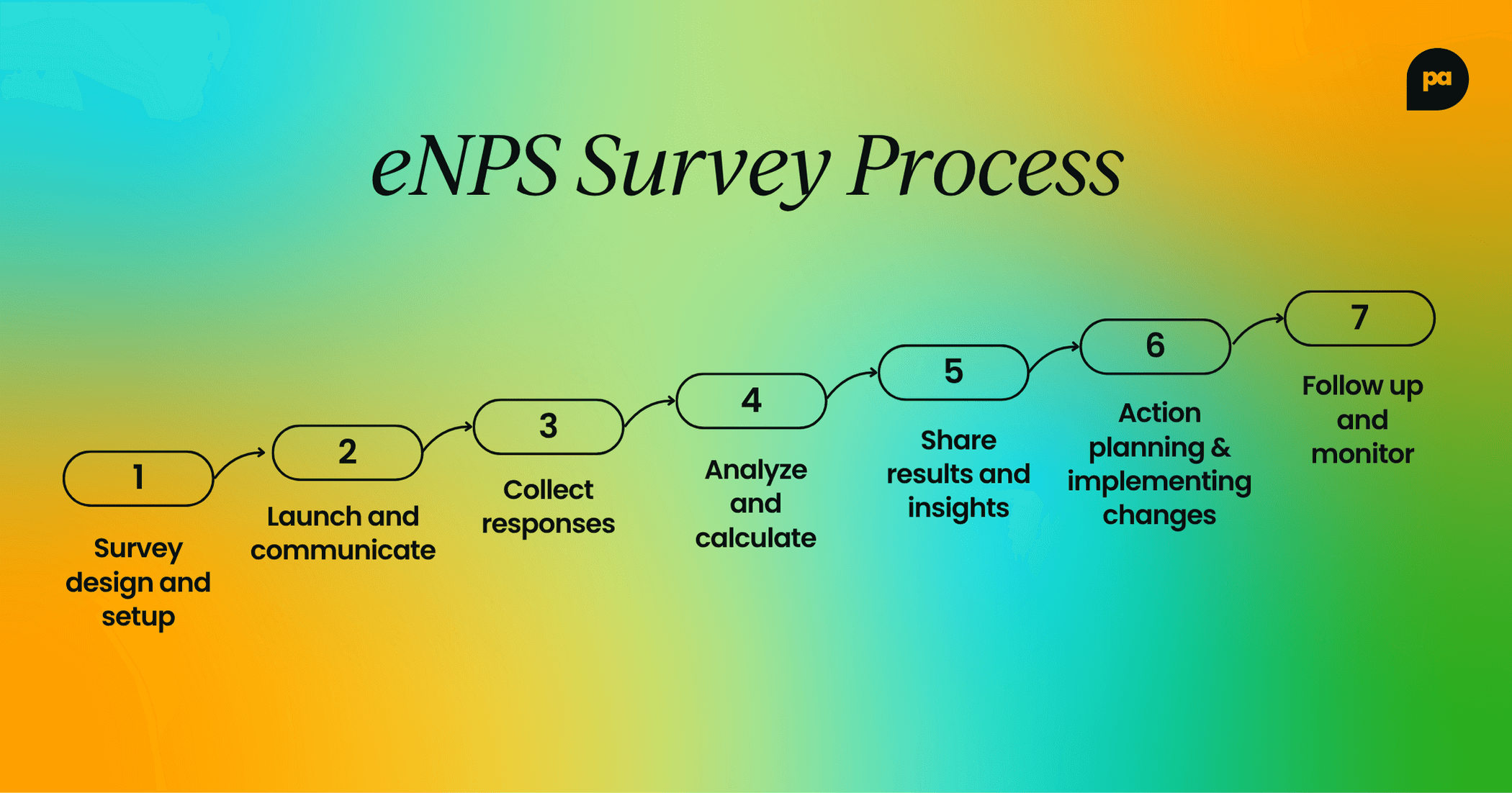
An Employee Net Promoter Score is a metric used to measure employee loyalty and engagement. It’s based on how likely employees are to recommend their company as a good place to work.
If you’re familiar with marketing, you could compare it to being similar to the classic Net Promoter Score you’d use for customers. But, instead of asking “Would you recommend our product?”, you ask your team:
“How likely are you to recommend this organization as a place to work?”
It indicates whether your people have a positive, emotional connection with the company or if they have had a negative experience that needs to be addressed. The eNPS gives you a clear, no-fuss score you can use and act upon.
Why should you measure eNPS?
Using Employee Net Promoter Scores gives you a window into your entire employee experience, from onboarding to leadership trust and whether your culture matches what’s on the posters in the break room.
If you’re not measuring their sentiment in a consistent, reliable way, how do you even know if your people are thriving… or just tolerating the job?
Employee Net Promoter Scores provide a quick, no-nonsense read on whether your team is pumped to be part of your company, or quietly updating their LinkedIn.
Here’s what makes eNPS so useful
- It’s focused. One question, zero fluff.
- It’s fast. You get insights without a 50-question survey.
- It’s emotional. That recommendation question? It hits at the heart of how people really feel.
- It’s actionable. You’ll know exactly where you stand and what to do next.
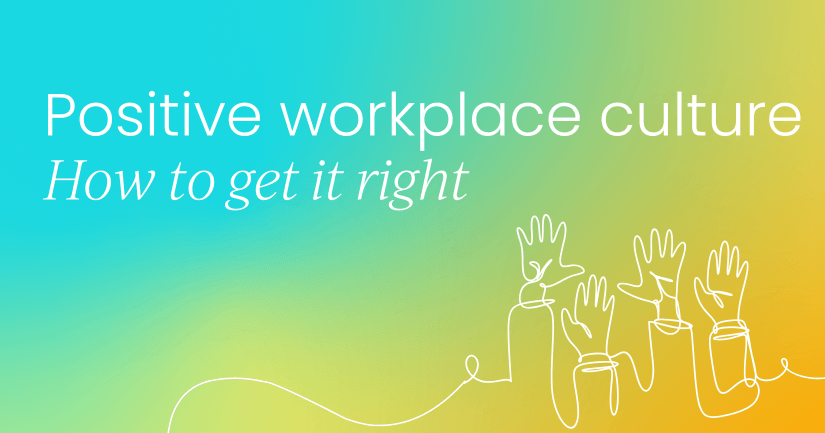
How to calculate employee net promoter score
Good news: eNPS is one of the easiest metrics you'll ever calculate. All you have to do is ask one simple question (yes, really). And here it is:
“On a scale of 0 to 10, how likely are you to recommend this company as a place to work?”
That’s it. Just one question and it reveals so much. Responses are then categorized into three groups:
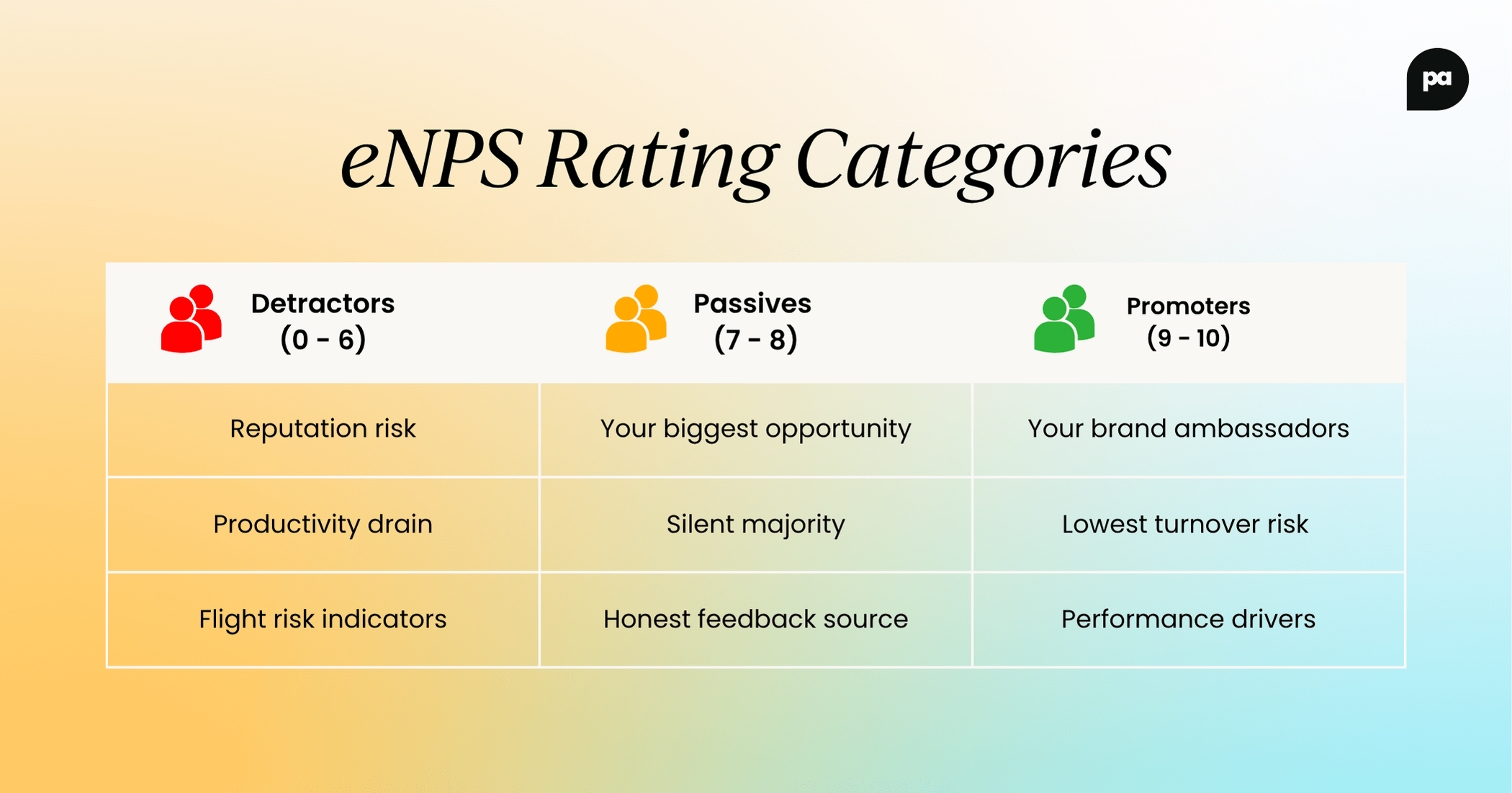
- Promoters (score 9–10): Enthusiastic and loyal employees who are likely to recommend the company.
- Passives (score 7–8): Not mad, not thrilled. They’re neutral. They show up, do the work, but probably aren’t raving fans.
- Detractors (score 0–6): These are the employees who might be frustrated, checked out, or even warning others not to work here.
Next, plug it into the formula:
eNPS = % of Promoters – % of Detractors
The score can range from -100 to +100 (although you ignore the passives when calculating the score). Let’s take a look at an example:
Let’s say you got 100 survey responses:
- 60 people gave you a 9 or 10 → 60% Promoters
- 25 gave a 0–6 → 25% Detractors
- The remaining 15 scored a 7 or 8 → Passives (ignore these)
So, the calculation looks like this:
eNPS = 60% – 25% = +35
That’s a strong eNPS!
What is a good employee net promoter score?
A “good” eNPS can vary based on your industry, company size, and even where in the world your team is located. It's also important to remember that every company is different. What feels like a win in one org might be a red flag in another.
But don’t worry, here’s a general cheat sheet to help you make sense of your score:
eNPS score breakdown:
- Above 50? 🎉 You’re crushing it.
That’s a strong signal your people love working with you, and they’re probably telling others too. - Between 10 - 30? 👍 You’re doing well.
There’s room to grow, but the foundation’s solid. Keep building on what’s working. - 0 to 10? 🤔 Time for a closer look.
You might have some happy employees, but also a few red flags starting to wave. - Below 0? 🚨 Houston, we have a problem.
That means more people are unhappy than happy. It’s time to dig into what’s going wrong and fast.
Benefits of using eNPS
If you’re looking for a quick way to measure employee sentiment and loyalty without drowning in data, eNPS might be your new favorite tool.
Here’s what makes it worth your time:
- It’s ridiculously simple - It consists of just one question, which is easy for employees to answer, and for leaders to understand.
- Fast feedback = faster action - Because it’s so easy to run, you can check in more often and spot trends early, before they become real problems.
- It measures loyalty, not just satisfaction - A high eNPS doesn’t just mean your people like working there. It means they’re willing to vouch for the company. That’s a much deeper level of engagement.
- Easy to track over time - Use it regularly and you’ll start spotting trends, improvements, and red flags early.
- It sparks real conversations - That one question can open the door to honest, valuable feedback, especially when you pair it with a quick “Why did you give that score?” follow-up.

Limitations of eNPS
As great as eNPS is, it’s not a magic fix. While it’s great at telling you if something’s off, it doesn’t give you a complete picture. So, before you lean on it too hard, here’s what you should know about its limitations:
- It’s just one data point - Great for starting the conversation, not so great for finishing it.
- It doesn’t explain the why- You get a score, but unless you ask for comments, you won’t know what’s behind it.
- Context really matters - An eNPS score without context can be misleading. A score of +20 might be amazing for one team and a red flag for another.
- Timing can throw it off - Send the survey at the wrong moment (e.g., after layoffs or bad news)? It’ll skew your results.
- It might not feel anonymous - If employees don’t trust the process, they might hold back. That’s why transparency matters.
eNPS benchmarks
eNPS benchmarks are useful for putting your company's Employee Net Promoter Score into context. A raw eNPS score, like a 20 or a 50, doesn't tell the whole story. But, when you compare it to what's typical for your industry, company size, and even geographical region, it can reveal so much more.
Here's a breakdown of eNPS benchmarks by industry (according to Hive HR):
- Education: 0
- Entertainment & Recreation: 5
- Government: -15
- Health: 15
- Hospitality: 30
- Housing Associations: 11
- Manufacturing: 15
- Non Proft: 10
- Retail: -5
- Technology: 28
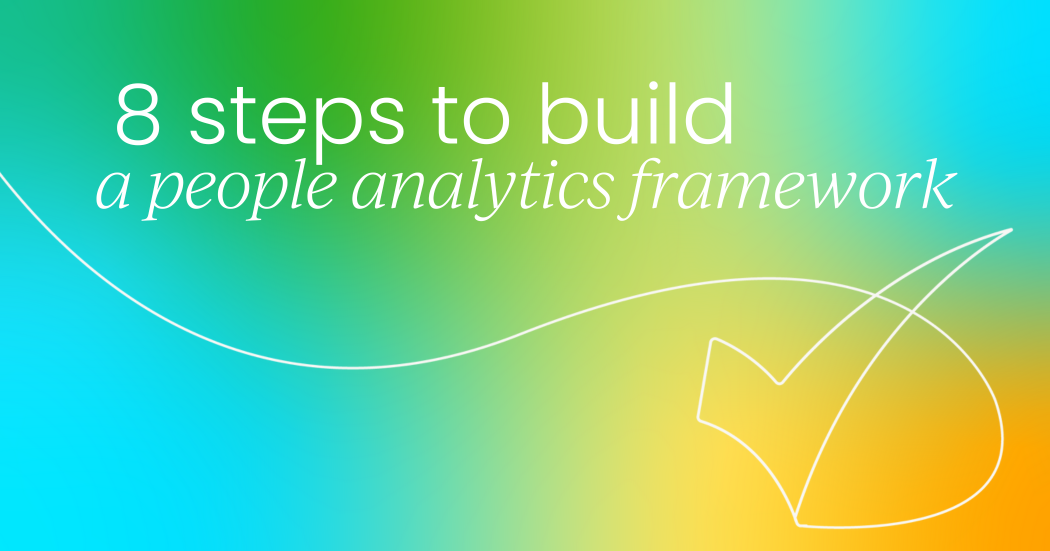
How to improve your eNPS
(Because a good culture doesn’t build itself)
So, you’ve run your eNPS survey, and now you’re staring at the results. Maybe you’re pleasantly surprised, or maybe you’re wondering if your team filled it out mid-meeting with their camera off and soul drained.
Either way, don’t panic. The goal isn’t just to get a higher number, it’s to create a place people actually want to work.
Here’s how to start turning that score around:
1. Start with the “why”
The score is just the start. What really matters is why people feel the way they do. This is what you should do: Pair your eNPS with a follow-up question like:
“What’s the main reason for your score?”
This gives you the context you need to take action that actually matters.
2. Close the feedback loop
Ever share feedback and never hear back? It’s the worst. Here’s what matters: If people take the time to be honest, acknowledge it. Share themes, admit where things need work, and let them know what’s changing (and what’s not - yet).
3. Fix the basics first
Are workloads out of control? Is communication a mess? Are managers missing in action? Before you chase fancy engagement strategies, clean up the everyday stuff that affects people most.
4. Invest in your managers
Let’s cut to the chase: people don’t leave companies, they leave bad managers. Train your leaders to listen, support, and coach (not just manage tasks).
5. Build real career paths
If your top talent doesn’t see a future with you, they’ll find one somewhere else. Offer growth. Give feedback. Create opportunities. Make it clear how people can move forward, and then help them do it.
6. Recognize people like you mean it
A simple “thank you” or “you crushed that project” goes a long way. Shout-outs, peer recognition and rewards all help boost morale and loyalty.
7. Be transparent
If you’re making big changes or hitting rough patches, don’t sugarcoat it. Employees respect honesty and clarity. Be upfront, and invite them into the conversation.
8. Track and celebrate progress
Improving eNPS takes time, but momentum matters. Celebrate small wins and let your team know their voice is actually shaping the culture.
3 phases of eNPS implementation
The collect phase (2-4 weeks) focuses on survey design and gathering employee feedback. The analyze phase (1-2 weeks) involves calculating scores and identifying root causes. Finally, the act phase (2-4 months) centers on implementing solutions and monitoring progress to ensure lasting change.

Tips for successfully using eNPS
Have you ever sent out an employee survey and gotten back results that made you think, "Well, that's... nice, I guess"? You're not alone. eNPS can be confusing at times and unless you know what to do with that feedback, you're just collecting numbers.
So, here are some tips to successfully implement and use eNPS:
Keep it simple and anonymous
Nothing kills survey trust faster than “Please enter your employee ID to continue”. Avoid this by ensuring complete anonymity so employees provide honest feedback without fear of repercussions.
Add meaningful follow-up questions
Beyond the rating, include open-ended questions asking:
"What's working really well for you here?"
"If you could wave a magic wand and fix one thing, what would it be?"
These qualitative insights are often more valuable than the score itself.
Time it right
Don't send surveys during your busiest season and then wonder why participation is low. Quarterly or bi-annual surveys work best because they're frequent enough to track changes, but not so often that people roll their eyes when they see another survey in their inbox.
Set realistic targets
If you scored +10 last year, aim for +15 this year. Nobody expects you to go from mediocre to amazing overnight (and if they do, they probably haven't managed people before).
Break it down by team
Your engineering team might love the flexible hours while your sales team is frustrated with outdated tools. One-size-fits-all solutions rarely work.
Promote a great eNPS
When you hit your target score, shout it from the rooftops! Put it on your careers page, mention it in interviews, include it in recruiting email.
What to do with eNPS results
Got your numbers back? Great! Now comes the part that separates the pros from the "we'll file this away for later" crowd...
Don't obsess over the score itself.
If your eNPS went from +10 to +8, that's not necessarily a crisis. But if the comments suddenly mention "terrible communication" everywhere, that's your real signal.
The reality for most companies is that sometimes your scores will tank, and it'll feel personal. Maybe you just went through layoffs, or that new policy everyone hated finally showed up in the numbers.
Don't panic. Seriously.
Do this instead:
- Look at the timing. Did something major happen right before the survey?
- Check if it's across all departments or just specific teams.
- Read every single comment (yes, even the salty ones).
Often, a dropping score links to external factors or growing pains that you can actually address.
Communicate results
Here's where most HR teams drop the ball: They get the results, analyze them to death, then forget to tell people what they learned.
Your employees are sitting there thinking: "Did they even read what I wrote? Are they going to do anything about the broken coffee machine I've mentioned three times?"
Here's your new rule: Within 30 days of getting results, send an all-hands email that says:
- "Here's what you told us"
- "Here's what we're going to fix first"
- "Here's what we can't fix right now (and why)"
- "Here's when we'll update you on progress"
Radical transparency beats radio silence every single time.

Making sense of the messy middle (Scores 6-8)
Ever notice how most of your responses probably fall in that 6-8 range? Those are your fence-sitters - not miserable enough to leave, not excited enough to rave about you.
These people are your biggest opportunity. They're telling you: "This place is okay, but..."
That "but" is your roadmap.
Maybe they like the work but hate the commute policy. Maybe they love their team but think leadership is out of touch. These aren't deal-breakers - they're fix-able problems.
Middle-range scores can be so valuable because they often come from your most honest employees. Your detractors have already mentally checked out, and your promoters might be wearing rose-colored glasses. But your passives? They're still engaged enough to care, realistic enough to see problems, and invested enough to want things to improve.
Red flags that mean you need to act fast
Some feedback requires immediate attention:
🚩 Safety concerns (obviously).
🚩 Mentions of harassment or discrimination.
🚩 Multiple people citing the same manager as a problem.
🚩 Entire departments scoring way below company average.
Have some further questions?
What is the difference between NPS and eNPS?
Both use the same 0-10 scale and calculation, but measure different relationships:
NPS: Measures customer loyalty - "How likely are you to recommend our product/service?"
eNPS: Measures employee engagement - "How likely are you to recommend us as a place to work?"
How do I increase our eNPS score?
Target your passive employees (7-8 scores) first because they're easiest to convert. Some quick wins include:
- Improve communication transparency
- Recognize achievements consistently
- Fix basic workplace frustrations
- Train managers in feedback skills
How should I introduce NPS to employees?
When introducing eNPS to your team, be transparent about why you're asking for their feedback. Let them know the survey only takes 2-3 minutes and that all responses are completely confidential.
Most importantly, commit to sharing the results and your action plan within two weeks so they can see their input will lead to real changes. A simple approach works best: "We're asking for your honest feedback through a quick 2-minute survey about your workplace experience. Your responses are confidential and will help us prioritize the improvements that matter most to you. We'll share the results and our action plan with everyone within two weeks." This builds trust by showing you value their input and will act on it.



 Follow us on LinkedIn
Follow us on LinkedIn



